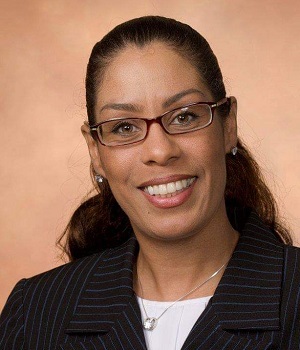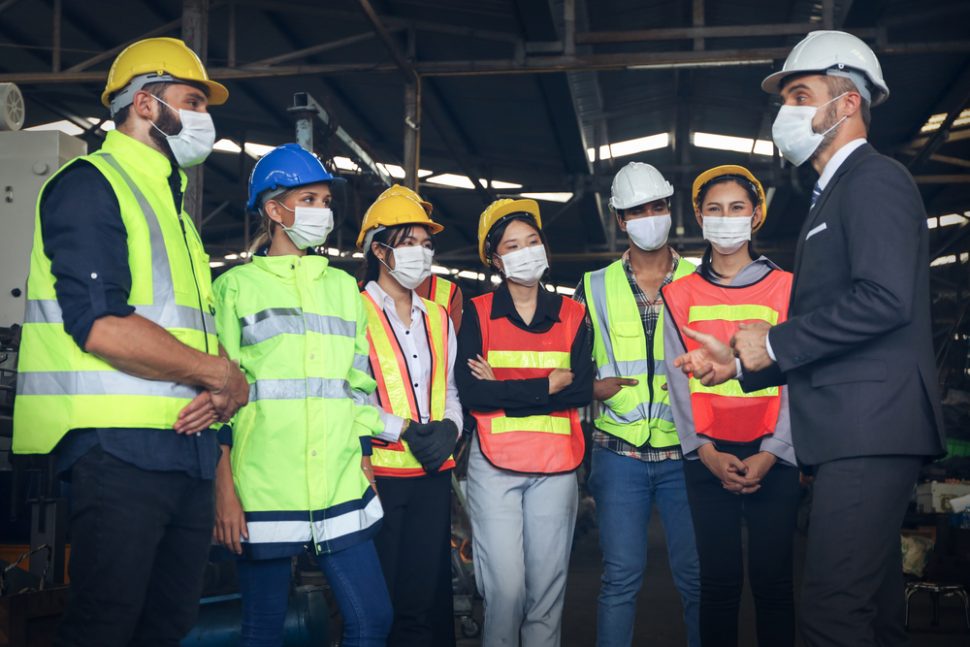It’s EHS Leadership Week, and for this special leadership-focused episode of EHS on Tap we spoke with Mary J. Stine, MS, OSH, ASP, the global director of EHS programs for a large multinational corporation based in Asia. We discussed what led her to an EHS career, her experiences starting out in EHS, the qualities of an EHS leader, and why it is important for EHS to have a seat at the leadership table.
Justin Scace: Hello everyone. And welcome to EHS On Tap. I’m your host Justin Scace, senior editor of the EHS Daily Advisor. And we want to welcome our listeners to a very special episode for our EHS Leadership Week.
Now, every environment, health, and safety professional has the potential to be a leader. And in fact, it’s important to hone your leadership skills in order to ensure that your EHS efforts are seen, heard, and effectively implemented throughout your organization.
Our guest today on the podcast is a global EHS leader with a wide variety of environment, health, and safety experience. And we’re very excited that she has found the time in her schedule to talk with us about EHS leadership in the workplace today.
On this episode of EHS On Tap, we’re joined by Mary J. Stine. Mary has extensive experience in the occupational health and safety, technology, and environmental compliance fields. And she has worked in arenas ranging from psychiatric medicine with an emphasis in pharmacologic studies to Y2K serial encryption routines, to occupational health and emergency management for military defense and aerospace work at UTC (United Technologies), which contributed to work on the US International Space Station among other projects. Currently, Mary is the global director of EHS programs for a multinational company base in Asia.
So, Mary, thank you so much for being with us today on EHS On Tap.
Mary Stine: Well, thank you. It is my pleasure to be here. I’m honored.
Justin Scace: Well, we’re so glad to have you. To start things off, could you just tell us a little bit about yourself and how you came to pursue a career and eventually a leadership role in EHS?
Mary Stine: It’s been a short run for some, but I’ve done a lot in 15 years. And I really was interested in the environment and the conditions of that once I was in elementary school. Can you believe it was that far back? I ran as a platform on environmental studies in elementary school, trying to get my group of people and peers to understand we were the ones that were causing the trash, et cetera, and the smog, and riding to work kind of thing. I was right on the edge of a street. Our school was a public school, and we were right able to see the traffic going by and whatnot.
So anyway, my platform ran as far back as elementary and that I was concerned about the environment. So that was the beginning and the precursor, which allowed me to get visibility from different corporations and companies. And they asked me to do a mural and the mural was on how we can save our environment. And that’s pretty much how I started in that path.
Justin Scace: That’s wonderful. How about later in your career, as you were working through your EHS career and ending up in a leadership position, what are some of the biggest obstacles that you faced during this journey? And how did you overcome them?
Mary Stine: Excellent question. And to lead off of the last question from the visibility, I was offered different avenues of education. One was a scholarship to UCLA. I had done an analysis on the tectonic plate divides. It was in high school; I was very concerned about the way we were managing our global navigation. So, they ended up giving me a scholarship to go to school there to study basic environmental studies.
I went over into medicine because I liked that better. And then I came back after working as an intern in a mental health institution where a lot of the people who were there were experiencing psychiatric issues and stress conditions based on their occupational environment.
So, what drove me back to environmental and occupational health was, yes, we do have a medication or a program that can modify behavior. But if we can get to the root cause of the behavior, which is how you perceive and understand the stress or the environment in which you’re being exposed, if we can manage those triggers, that would be a better perspective, in my opinion, of resolve in the solution without a medicated device.
Justin Scace: Excellent. Any other big obstacles that you faced as you worked your way up into your current position?
Mary Stine: Obstacles were quite prevalent. I’m a female. I’m a female of color. And I was quite young when I began. The main obstacles were that in environmental health and safety and OSH, actually, it’s pretty much a male dominated field. A lot of the people who you come into contact with are expecting a certain number of years and an acumen before they can take your advice. So, the obstacles that based were based on how I could learn to leverage my influence.
So, I shored up my skills on leading and understanding how people read, think, and respond to body language, communication styles. That improved my ability to translate information to larger audiences. So, the obstacle was being perceived as, and then my solution was learning techniques to mitigate those observations and to drop those defenses. As a result of that, I was given more and more responsibility coming from a consultant, an intern, all the way up to a director in a global organization.
Justin Scace: So now that you’re in that global director position, corporate EHS leadership position, what sort of day-to-day challenges are you facing now?
Mary Stine: As you know, we are going through quite an unprecedented amount of attention to occupational health. So, one of the things that I’ve learned in my day-to-day is to be cognizant of how others are perceiving the same information that you are. I’m sensitive to people who are very, very alert and diligent on hygiene and preparation, but they’re not so keen to their social interactions and dynamics or the fact that they’re policing other people rather than understanding the overall picture.
So, my day-to-day has been remote up until this next assignment, which will be overseas again. And that’s preparing for COVID testing before you leave and doing the evaluation for the airplanes and all of that. It’s getting really frustrating, actually, Justin, but the benefit of a day-to-day is I’m learning more and more about how to use the internet, how to use technology, how to use devices for data encryption, and also for having information sends over and private links. So that’s fun.
The other part of my daily activity is meeting people and getting a chance to know more about what they’re doing. When I’m not in the office, I’m actually walking. I’m at the beach. I’m seeing people that I don’t know, and I’m engaging them and teaching them about why they’re wearing their PPE. Some parts of being a global manager are getting entered… I guess you can say introductions to what you’re doing in a different way. They just think of you as a safety cop, but day-to-day now because of COVID, everyone has questions. And I feel like I can be an advocate for change in that.
Justin Scace: So, if I could ask you a question on that is this, despite all of the health and safety challenges that are happening right now, is this a sort of a good time for safety culture, building up that cultural aspect of EHS?
Mary Stine: It is. It’s a very good question, Justin. It is a perfect time for safety culture. Right now, I’m doing a training on change management, helping people to understand four different perspectives on safety culture and how pertinent it is to your overall behavior of your employee.
For the podcast, people who will be speaking are going to come from different perspectives in their businesses. Some are construction, some are environmental activists, some are internal auditors. Some are working with the technology side, like the televisions, the telephones, et cetera. So, they’re all talking about how they were impacted by this particular pandemic, and how it affected the influx on their environment, how it stopped them from doing their work or even how they started to burn out websites and impacted the amount of data that was put onto it a line at a time.
So, the change management was a good part because if your culture is that I’m not adaptable, I must stay in the same lane. I want things to be the same way every day. They’re going to have a crisis. So, one of the things that we learned as our global management education and training is that you need to take a beat and let everyone know it doesn’t have to happen right now. Just be prepared, take the tools we’ve given you, and assimilate the data as you can. Then when you’re ready to engage, step forward and be productive.
And because of that, a lot of, not saying all, but a lot of the cultures and paradigm shifted because no one felt they needed to know everything at once. When you’re in EHS, Justin, one of the things that comes to become expected, I would say, is the same thing as a medical doctor. You’re expected to know everything right then and there when it’s on demand and that can be quite pressure inducing. But what I’ve learned in my experience is that you don’t have to have the information immediately. You just need to know who has it or how to get it and let that person know you’re on your way to get it. And you’re on your way to bring it back or have them go with you even through a navigation on the phone or three-way on a phone call. So that does reduce a lot of the panic in the culture of safety now. It doesn’t have to be instantaneous.
Sometimes I hate the internet because I remember when I used to look at books and I would open up the card catalogs. Everything being instant now is quite alarming for the professional. They’re all side chair EHS experts coming up to you with missed quotes and context data. So, we definitely have our challenges.
Justin Scace: Yeah, absolutely. Those are all some great points. Now, one thing that you were just talking about Mary was the past year has highlighted the need for good leadership in the environment, health, and safety field, perhaps more than ever before. So, what I want to ask you is what are some of the leadership principles that you live by, and how do you apply them to the EHS function?
Mary Stine: That’s a very good question. I’m a little remiss in the fact that I’ve already given everybody my data. So, what are my principles? But for you, it’ll be novel. Every one has to be integral to their own development. There’s no one that can cause them to be or forced them to be anything other than that, which they agree to be.
So, the first thing is to be true to yourself, to allow yourself the knowledge that you can accept. If it’s out of your league, agree. I’m going to get to that at some point. I will attain it. So that’s my first principle.
The second one is, be true to those around you. If you’ve made a commitment, if you’ve made an agreement, if you say to someone, “I’m going to do this,” as it says in the four agreements, then do that. Do not hold yourself available to be excused. “Oh, I didn’t anticipate this interruption,” or “This came up.” That is very shoddy, in my opinion, on your character. So, your character has to be impeccable and you have to be trustworthy. So be true to yourself and keep your agreements.
The third principle, and this is sometimes difficult to attain, is to be honorable and ethical in all that you do. If there is an opportunity that is too good to be true, it probably is. And I’ve turned down many assignments that were very lucrative because they wanted the outcome to be changed into their favor. And as a professional, when you put your badge on, when you say, “I’m certified by the Board of Safety Professionals and I’m certified in this knowledge,” I cannot then give the knowledge that is false. So, you must be ethical in your agreements and you must make sure that you are accountable when you sign your name on a document.
And fourth is to remember to leave a good impression with whomever you’ve spoken to. Maybe you didn’t agree with that person. Maybe you came to different conclusions and your decisions were diverse. That’s not an excuse to be angry. You need to always agree to disagree or to leave in peace with someone to say, “I’ll think about your perspective. I don’t see it right now, but I bet in time I will. Let’s keep in touch.” Always agree to walk away with a personality that reflects that you are an intelligent, functional, and emotionally high quotient individual.
Justin Scace: Oh, that’s wonderful. Those are some really great principles that you’ve outlined right there. Now beyond these leadership principles that you live by and that you so eloquently described here. I mentioned in the introduction to this episode that all EHS professionals, including everyone in our audience here today, they all have the potential to be leaders regardless of their current position within some sort of organizational hierarchy. So what advice, beyond what you’ve already told us, what advice would you give to them about how they can accomplish their day-to-day tasks that they have to get done every day, but while also setting an example to follow for their employees, their colleagues, and even their managers and executives? What advice would you give them?
Mary Stine: Justin, sometimes everyone has a perspective that may not fit. So, let me give you a story of how I managed a situation and maybe they can glean the advice from that.
Justin Scace: Yeah. Perfect.
Mary Stine: All right. I came into a company as an intern and my goal was to observe and to learn from the internal auditors at the company. The company was failing in their environmental health and safety program. They had experienced MOD of over 1.25. They had 700 employees of which every other week someone had an issue, which was inundating the HR staff. So, they called in the calvary. I came in to see what I could and to ascertain where I could help. But I was really wet behind the ears right out of college.
So, my initial response was I had a boss that was high-performing, dual personality. He put me directly in front of the board. He had me sitting in a leadership position. I was just white knuckling every day. Hoping I wouldn’t mess up these meetings. And when I would get to break, someone would come to me and say, “Wow, you really handled yourself well.” And I was thinking, “What did I say that was impressive?” I was not really sure I was being competent.
But it comes to find out that number one thing is you’ve got to act as if you belong the room. Okay. So act like you know what you’re doing. Don’t grin, don’t giggle. Don’t look away, make eye contact. Keep your hands on your lap. If you don’t have any notes, bring a piece of paper, put it in your lap immediately when you sit down and look down every now and then, so they think you’re looking at something.
And the other thing was because of that persona, I was put into another role within three months. I was only supposed to be there for an internship. They asked me to come back after I graduated for hire. And when I came back, they asked my opinion as if I was 100 years old. They asked my opinion on things. And I just use common sense.
One of the things they asked me was, “We’re trying to get this particular building built, but we’re having a really hard time with the city.” I had no excuse. I didn’t know anything about building permits. I didn’t know anything about construction, Justin. So, if I really, really wanted to, I could have said, “Nope, let me see if I can get someone.” But instead, I agreed. When I agreed to take on something that was considered a stretch assignment, that showed the company that I was a key player.
The difference between a key player and a non-key player is that you take risks that are mitigated. The mitigated risk means that you know exactly that you could really fall, but that the people around you will support you or help you if you say, “Hey, I don’t know where I’m at right now. Can you bring me back into focus?” So that was a mitigated risk. And they had confidence in me.
Because of that, I then was able to move forward and do something that they hadn’t been able to do in five years, which was build a building from the ground up. I had to get a team of experts around me. I had to get all the information I needed as I was learning and carrying a book and walking down the hallway. But when it was done, this man turned to me and said, “You’re the only person that I would trust with $15 million.”
So that to me shows that if you are a novice, you’re just starting out. You don’t know what you’re doing, or if you are 100% into the game ready to end your career, you just need to give the person a value in you. You have got to perceive yourself as valuable and show them your value. That way they’ll listen to you. Even if it’s some asinine comment that you really should have pulled back later on, they will say, “That was quirky. That’s out of character.”
So that would be my advice to just come to the table, own it, take on stretch assignments, finish it, get your backup, close it out, shake hands, and get the attaboys as needed.
Justin Scace: Sounds good. This has been great, Mary. So many wonderful stories and advice on EHS leadership. Very important topic, very important to our audience, and a great addition to this week’s EHS leadership content and events. Thank you so much again, Mary, for joining us today on EHS On Tap.
Mary Stine: Well, thank you. It’s been my pleasure.
Justin Scace: Absolutely. Anytime. And as always, thank you to our listeners. And please keep an eye out for new episodes of EHS On Tap and keep reading the EHS Daily Advisor to stay on top of your safety and environmental compliance obligations. Get the latest in best practices and keep your finger on the pulse of all things related to the EHS industry. Until next time, this is Justin Scace for EHS On Tap.
 Mary J. Stine, MS OSH, ASP, has detailed experience in the Occupational Health, Safety field, including 10 years in Environmental Compliance. She attended UCLA and Pennsylvania State University to being a career in Psychiatric Medicine with an emphasis in Pharmacologic studies. She then migrated into Occupational Health and Emergency Management for Military Defense and Aerospace work at UTC which contributed to actions for the US International Space Station (ISS) and Military. Mary J. Stine, MS OSH, ASP, has detailed experience in the Occupational Health, Safety field, including 10 years in Environmental Compliance. She attended UCLA and Pennsylvania State University to being a career in Psychiatric Medicine with an emphasis in Pharmacologic studies. She then migrated into Occupational Health and Emergency Management for Military Defense and Aerospace work at UTC which contributed to actions for the US International Space Station (ISS) and Military.
Mary was awarded internships with UCLA and The California Public Health with project concentration on Pathology and Pharmacological vigilance. Actively involved in Technology – She co-engineered a patent for Y2K serial encryption routine for up to 2 centuries worth of data compilation and was awarded 48 points for royalties. Mary is now the Global Director of EHS Programs for a large multinational organization in Asia| EU | USA. |
EHS on Tap is an environmental, health, and safety podcast by BLR’s EHS Daily Advisor. On each episode of EHS on Tap, our host will discuss emerging legal, regulatory, and policy issues with industry experts and the impacts to everyday safety and environmental professionals. EHS on Tap topics run the gamut of contemporary issues facing EHS managers and professionals today.
Download the podcasts on iTunes here, and also be sure to visit our SoundCloud page for a full listing of all of our episodes!





